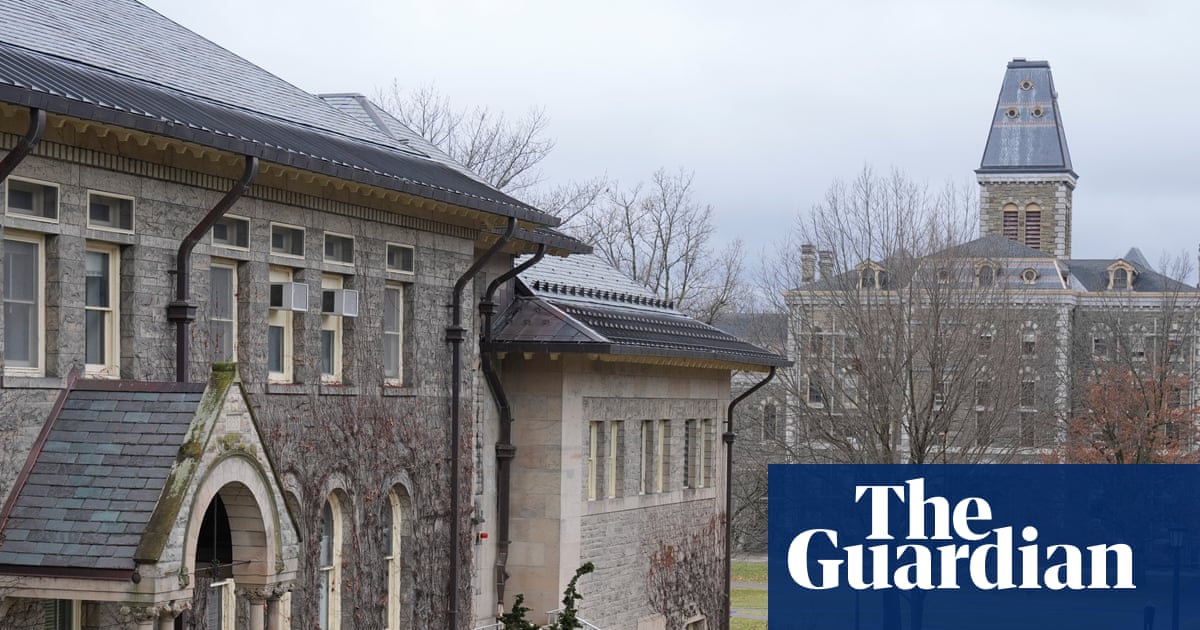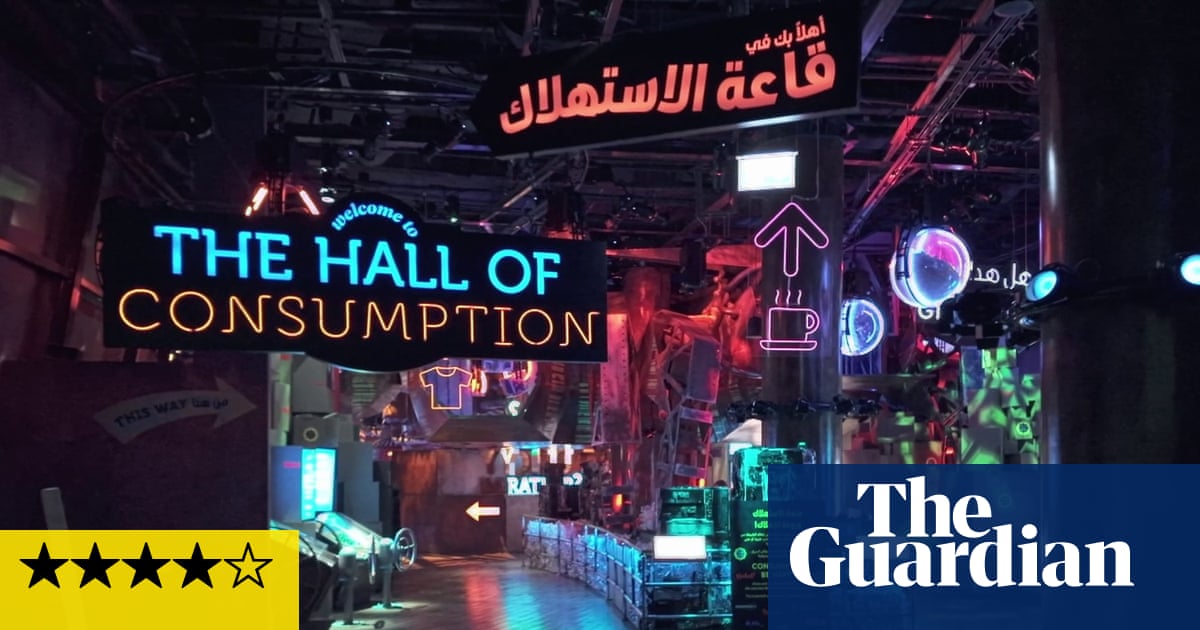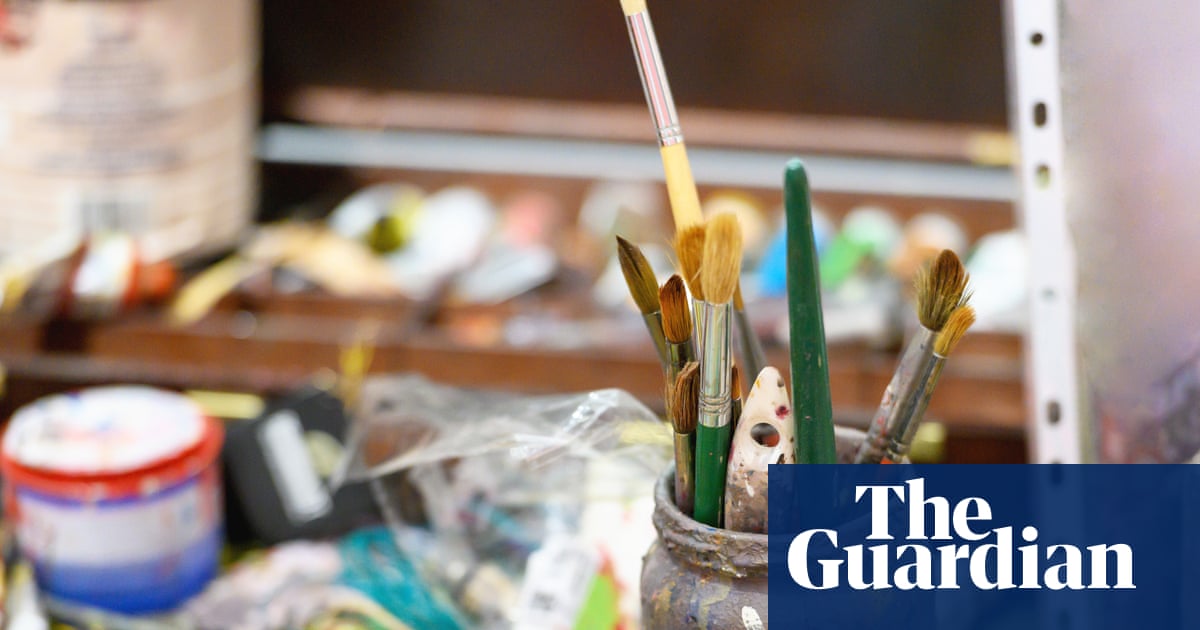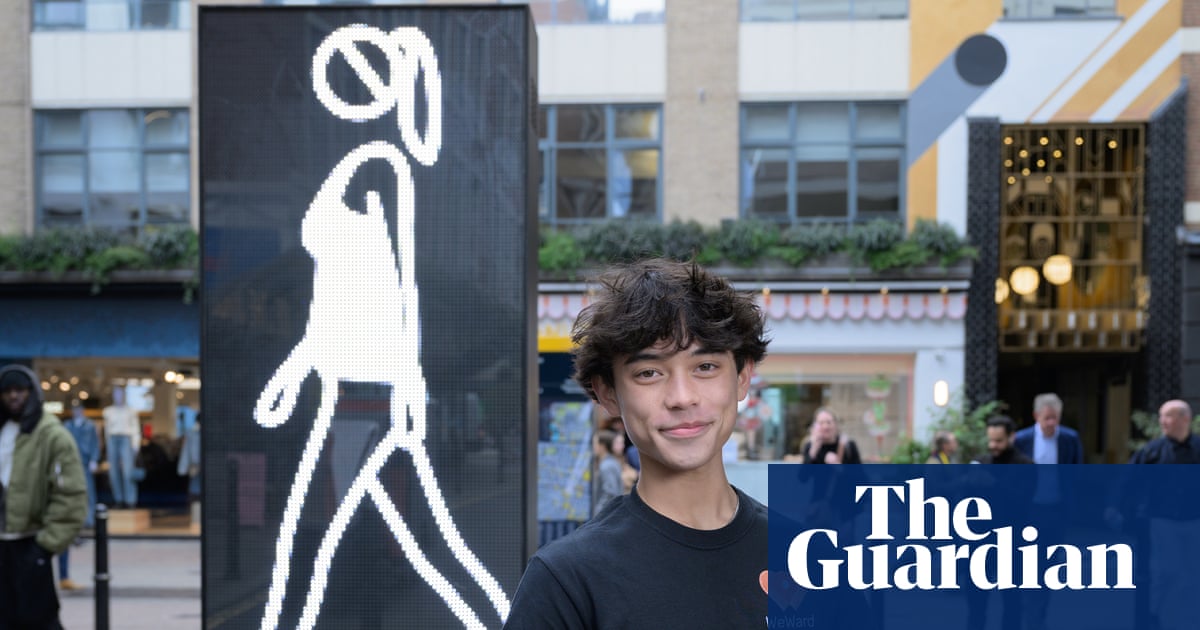Hilary Lloyd’s Very High Frequency is a strange encounter between the artist and the late British television playwright Dennis Potter, who died from cancer aged 59 in 1994. Lloyd approaches her subject obliquely, via a complex mise-en-scène in the semi-darkened main gallery. There are screens all round. Some you can sit at, others are hung mid-air from wires or mounted on stands or fixed to the walls. High above, a mirror ball twirls, dimly reflected in a shiny black-painted slab that sits low on the floor in front of a translucent hanging curtain. It is a room of interruptions and diversions. What’s that black slab about? A reference to the seams of coal in Potter’s birthplace in the Forest of Dean on the border between England and Wales? I think of the glossy black of a grand piano, and a dance-orchestra backing Al Bowlly, Potter’s favourite 1930s crooner. Does the slab intimate a darkness haunting Potter’s life and work? Moving around is a constant negotiation. Potter’s past collaborators appear and disappear, re-enact moments from his work, reminisce and get sidetracked.
Annotated pages of his scripts, not always easy to read, appear on a screen high above our heads. On another, the Berry Hill Silver Band (in which the youthful Potter once played) practise As Time Goes By. On another screen, sitting at home and speaking with Lloyd, the now 85-year-old broadcaster and author Melvyn Bragg remembers his famous last television interview with Potter in 1994, and gets waylaid by a memory of a New York sidewalk encounter with Lauren Bacall. High Frequency is full of delays and diversions.

Wearing headphones and standing before the screen on its raised lectern, I struggle to listen. Behind me, Henry Hall and the BBC Radio Orchestra strike up the familiar, swaggering bars of The Teddy Bear’s Picnic. “If you go down to the woods today you’re in for a big surprise,” goes the song. Two young men are fucking in the bracken. Avid and bucolic, the bodies are pale in the dappled green woods as they kiss and wrestle, in a situation devised by Lloyd. Potter’s 1968 television play A Beast With Two Backs fictionalised an incident in the 1890s, when an itinerant troupe of French Travellers, accompanied by some dancing bears, were waylaid in the forest and their bears killed, in retaliation for an entirely unrelated attack on a local young girl. Potter’s work is filled with memory and secrets, sex and death, and the forest itself is a protagonist as much as a setting.
Here’s footage of the sections of the rail tracks that led into now defunct little forest coal mines, bits of rusting equipment, piles of decaying pit-props and sealed-up entrances to pits which Potter described as being like great black sows buried in the trees. Going from screen to screen, headphones come on and off. Now a supermarket trolley clatters along a street. Then there’s talk of iron and coal and charcoal burning, and the history of the region, and phone-footage of cats donated by a staff member at the gallery. Lloyd gets everyone involved.
Richard E Grant has a jolly lunch at Quo Vadis in Soho with Studio Voltaire curator Nicola Wright. We get a sneak glimpse of the day’s menu, a look at Grant’s wine glass, his watch, his Adidas pumps, his winning appeals to the camera. Zinnnnnnng! Grant was in Potter’s Karaoke (one of his last works, posthumously produced in 1996) and now he’s miming to Zing Went the Strings of My Heart, and lip-syncing to Pennies from Heaven. Elsewhere there are interviews with actors Janet Suzman, Alison Steadman, John Belcher, Potter’s location scout and “fixer”, and Kenith Trodd, who produced much of Potter’s work.
But there’s lot here that feels superfluous and extraneous. Videos of cats and grasshoppers, a phone camera zooming back and forth, the phrase Wow What a Shit Show sequinned on to a shirt, closeups of baubles on a Christmas tree. I guess it is all texture, and might allude to tiny details in Potter’s fictions or his life.
Lloyd likes losing us in detail. Perhaps it all comes back to Potter’s remarks, when he was dying, about living in the moment, when “things are both more trivial than they ever were, and more important than they ever were, and the difference between the trivial and the important doesn’t seem to matter”. This could easily be the motor of Lloyd’s own art.
Thirty years after his death, Potter is still being talked about, and his one-off television plays and longer series, which came to include fantasy segments, lip-synced song and dance routines, sex, murder and autobiographical allusions to his own childhood abuse by an uncle, have a continuing resonance. One series, Pennies from Heaven, was remade as a critically well-regarded Hollywood film, though it bombed at the box office. Another, The Singing Detective, starred Michael Gambon, who spent much of the work in a hospital bed, suffering the same chronic and debilitating psoriatic arthropathy as Potter.
Divisive, contrarian and enormously creative, Potter was an outspoken and complex figure, both as a man and as a playwright. The complexities of Lloyd’s own art, and her approach to Potter make for a rich, allusive but sometimes frustrating exhibition. You have to work at it. Potter’s interview with Bragg, recorded just a month after the playwright’s diagnosis with terminal cancer, has been called the writer’s final great work. The interview was unscripted and uncensored. “This is my chance to say my last words,” says Potter towards the end.
Filmed in a darkened studio, with Potter smoking and drinking champagne and swigging from his hip-flask of morphine as he talks with Bragg, the conversation is full of life, even in death’s ante-room (he would die a few weeks later). Potter is funny, serious and unafraid. Shown in a room away from the main gallery, it demands our attention. Nowadays, this interview is referred to more often than Potter’s television plays, which are rarely screened. For one thing, their production values often work against them. But Bragg’s interview is as present as ever it was. Ed Atkins’ 2021 film The Worm, recently screened in his Tate Britain show, builds on the physical situation of that interview, which is also the key work here, not least for Potter’s fortitude and candour about death and dying, and his years of debilitating illness.
As we watch, high on the wall in the corner behind us, Lloyd’s silent, looped film Blossoms plays. Out-of-focus pink and white blossom sways silently in a light breeze against a blue sky. You know it is there but you can’t see it when you are looking at Potter’s amused smile and listening to his soft accent, as he talks about the blossom on the plum tree beyond his window in Ross-on-Wye.
Lloyd’s exhibition gives us an opportunity to think about Potter again. There will be screenings of many of his television plays, and of other archive television interviews with Potter. All this is more than period flavour, and we get a sense of Potter’s originality, his belief in the possibilities of television as a medium, and its vitality and openness during the period in which he was working. What Lloyd brings to Potter, and Potter’s work to Lloyd, is less clear. Perhaps it is all about the slipperiness of life, and how hard it is to capture significance, or to know what or where it is.

 1 month ago
54
1 month ago
54
